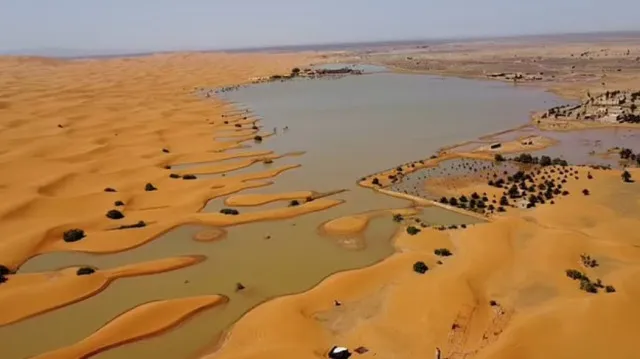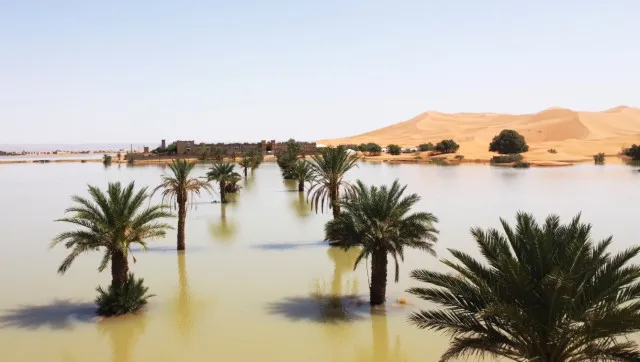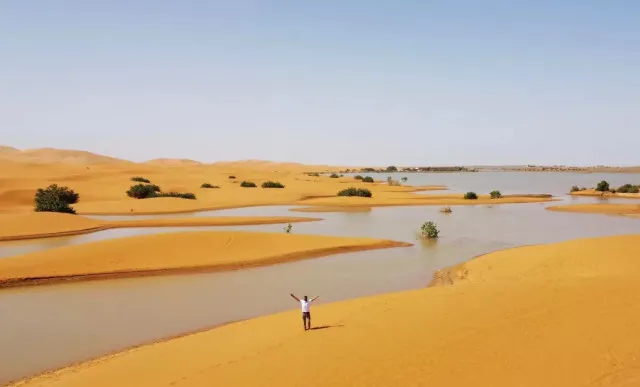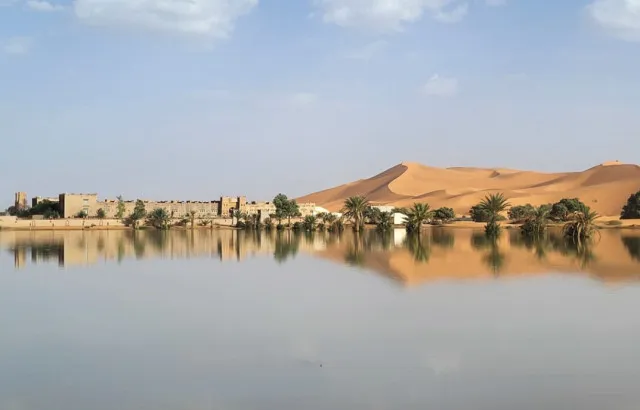Recently, the Sahara Desert faced unusual flooding due to a rare weather event occurring once every 50 years.
Sahara Desert witnesses unprecedented flooding in once-in-50-year event
In a rare occurrence that happens once every 50 years, the Sahara Desert has experienced extraordinary flooding.
Recent rainfall has transformed parts of this typically arid landscape in Rabat, Morocco, into a scene of unexpected water abundance.

The Sahara is known as one of the driest places in the world. Now, it shows how strong nature can be with its flooded ground.
The recent rains have delivered an unprecedented amount of water to the Sahara Desert.
This has left both locals and experts amazed by the sudden change in the landscape.
Recent heavy rains transform arid landscapes in Southeast Morocco
In southeast Morocco, particularly in areas like Tagounite, pools of water have emerged amidst the palm trees, a sight rarely seen in this arid region.
The downpour, which occurred over two days in September, surpassed annual rainfall averages in various locations.
Typically receiving less than 250 millimeters (10 inches) of rain annually, these parts of the Sahara were inundated with a deluge rarely witnessed.

Tagounite, a village located about 280 miles south of Rabat, was heavily affected by the rains.
In just 24 hours, the area received over 100 millimeters (around 3.9 inches) of rain, which is more than one-third of the usual yearly rainfall.
The General Directorate of Meteorology in Morocco emphasized the importance of this event.
They stated that it had been three to five decades since such a large amount of rain had fallen in such a short period.
Houssine Youabeb from the General Directorate of Meteorology in Morocco told AP:
“It’s been 30 to 50 years since we’ve had this much rain in such a short space of time.

NASA satellite images have shown water flowing into Lake Iriqui, which is located between Tata and Zagora.
This lake basin had been dry for half a century until now.
These visuals showcase vehicles navigating through the newfound water bodies within the desert, a surreal sight in a landscape known for its aridity.
While this unusual weather occurrence has left many in awe, the rain’s impact extends beyond the visual spectacle.
The replenished groundwater aquifers, essential underground reservoirs that store water, will play a crucial role in sustaining communities residing in the desert.
Moreover, the rainfall has refilled dammed reservoirs in the region, although the extent to which this will mitigate potential drought remains uncertain.

Tragically, the floods have not been without their human cost.
Over 20 individuals lost their lives in Morocco and Algeria as a result of the flooding that ensued after the heavy rainstorms.
In Morocco alone, 18 people perished in rural areas, with 56 homes destroyed by the floods.
The deluge also inflicted damage on critical infrastructure such as drinking water facilities, roads, and power supply networks.
The agricultural sector has also suffered repercussions, with harvests adversely affected by the unexpected rainfall.

In response to the crisis, the Moroccan government has provided emergency relief funds.
This action is essential to support communities affected by the floods during this difficult time.
The recent flooding in the Sahara Desert followed a previous disaster: an earthquake last year that killed nearly 3,000 people.
This earthquake also caused significant destruction in communities located in the High Atlas mountains of central Morocco.